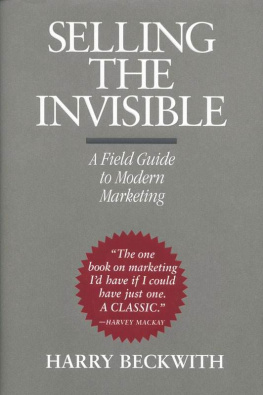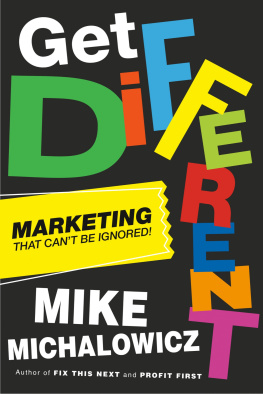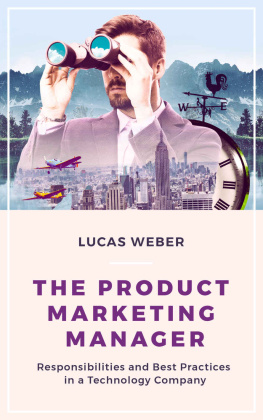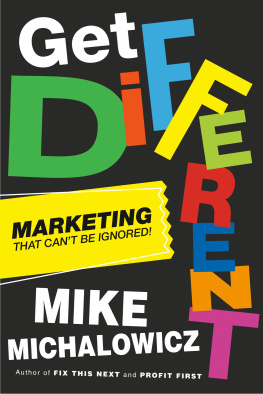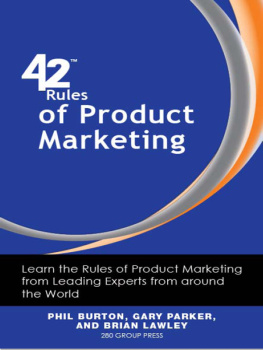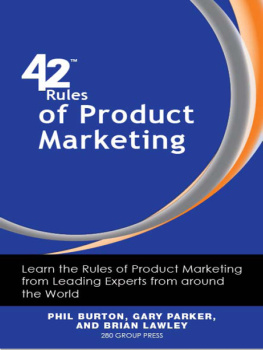Contents
Guide
Praise for The Invisible Promise
Since the turn of the century, market power has been shifting from the vendor to the customer, and offer power from products to services. Marketing services in a customer-centric world is at the core of the new economy, and Harry Beckwith is the best guide you could have as you navigate these new waters.
Geoffrey Moore, Author, Crossing the Chasm and Zone to Win
Harry Beckwith is not just one of my favorite thinkers about branding and service marketing; hes one of my favorite writers. His tight, clean, storytelling prose drives forward to key insights to improve your business.
David Gardner, Founder and CEO, The Motley Fool
For twenty-five years, Harry Beckwith has seen what we cannot and then turned what is invisible to us into a vision. He has done it again with The Invisible Promise.
Ty M. Votaw, former Commissioner, Ladies Professional Golf Association
My favorite sage on marketing has come up with this best yet. Harrys observationsshort, powerful, and memorableare incredibly inspiring. I devoured The Invisible Promise in one sitting, and leapt up to apply it.
Derek Sivers, Entrepreneur and Author
Our firm thrived by following Harrys insights, and The Invisible Promise will help you do the same. Through his wonderful stories, written with a clarity and wit that make the book so delightful to read, The Invisible Promise remains especially compelling in the new business era of internet and communications technology.
Clifford Greene, Founding Partner, Greene Espel
For more than two decades, I have devoured Harrys ideas on marketing the invisiblein software, music, finance, law, and consulting. The rise of online marketing and social media makes his ideas in The Invisible Promise even more important today. I already am applying them in my business and recommending them to everyone in my network.
David Meerman Scott, best-selling Author of 12 books including The New Rules of Marketing and PR
When I read Selling the Invisible, I knew Harry Beckwith was both a winner and a sage. The Invisible Promise and Harry Beckwith have the process right side up. Its hard to find answers that make sense. Its hard to find answers that you can use the minute you read them. And its almost impossible to find answers that work. This book answers all three questions both invisibly and visibly. Let me give you my best two words of advice: buy it!
Jeffrey Gitomer, Author, Little Red Book of Selling

Also by Harry Beckwith
Selling the Invisible
You, Inc.
Unthinking
What Clients Love
The Invisible Touch

The Invisible Promise copyright 2022 by Harry Beckwith
All rights reserved. No part of this book may be used or reproduced in any manner whatsoever without written permission of the publisher, except in the case of brief quotations embodied in critical articles or reviews.

Matt Holt is an imprint of BenBella Books, Inc.
10440 N. Central Expressway
Suite 800
Dallas, TX 75231
benbellabooks.com
Send feedback to
BenBella and Matt Holt are federally registered trademarks.
First E-Book Edition: 2022
Library of Congress Control Number: 2022013518
ISBN 9781637741924 (hardcover)
ISBN 9781637741931 (electronic)
Editing by Katie Dickman
Copyediting by Michael Fedison
Proofreading by Isabelle Rubio and Ariel Fagiola
Indexing by WordCo Indexing Services, Inc.
Text design and composition by PerfecType, Nashville, TN
Cover design by Harry Beckwith
Special discounts for bulk sales are available. Please contact .
To David Macy-Beckwith
Contents
You Are Not Selling Toothpaste or Teslas
I n 1997, in Selling the Invisible, I pointed out that 75 percent of Americans worked in service companies and that by 2005, that figure would top 80 percent. But if you wanted to know how to market a service, there was little to be found. Searching Harvard Business Reviews compendium of marketing case studies, I found that only one in four dealt with services. We were a services economy, I realized, living with a product marketing model.
And this trend to service has accelerated. In 2000, seven of Americas Fortune 10 companies were product manufacturers. Today, there is only one: Exxon.
We live in a nation dominated by services, but by a marketing model from the world of products, most famously from Procter & Gamble: features and benefits, Unique Selling Propositions, positioning. Its the world of the famous four Ps: product, price, place, and promotion.
But if you are responsible for marketing a service, you soon begin to wonder if those principles fit. And then you realize that they dont. You need to alter your approach radically.
And there is a good reason for this: a service is nothing at all like a product.
Start with the first P, product. A service is not a P at all. A product is tangible. Take a new car. You can see it, touch it, feel it. You even are seduced by its smell and its sounds: the nice roar of its engine, the famously satisfying thud of its closing car door. Often, you are delighted with products like that carthe perfect black dress, that new carbon fiber driver with the head the size of a waffle iron, the latest Air Jordansbefore you even buy it. Products are immediately satisfying.
Now compare this to a service. At the time you agree to purchase a service, it is invisible to you. You buy your services touch-, taste-, feel-, smell-, and sight-unseen.
Now the second P, price. Products have price tags. Services usually do not. Instead, a representative of the service promises to go back to work up an estimate. As a prospect at that moment, you are not sure you will be willing or able to pay the amount the service rep eventually quotes.
And if a product fails, you know it: your computer screen goes blank, the headphones go silent, your milk goes sour. But knowing when a service fails, or even if it has failed, is much harder. Are those wedding photographs you received as nice as the ones you were shown? Should your knee still be aching four weeks after surgery? And was that a good tax return? If you know enough to question a tax return an accountant does for you, you know enough to do it yourself.
And because product failures are obvious and provable, most products can be warrantied. Few services can be. As a result, your only recourse for most service failures is a long and painful negotiation or an even longer and more expensive litigation.
Even more critical today, in the last thirty years, we have lived through a quality revolution. Manufacturers make products using well-tested and computer-monitored processes that ensure ever more remarkable quality. As just one example, the word lemon for a bad car has disappeared from our vocabulary.
Service companies, by contrast, deliver their products through a series of acts that rarely can be routinized into a fail-safe process for producing a superior outcome. No one has devised a method, for example, for turning out consistently effective radio commercials.
Next page

